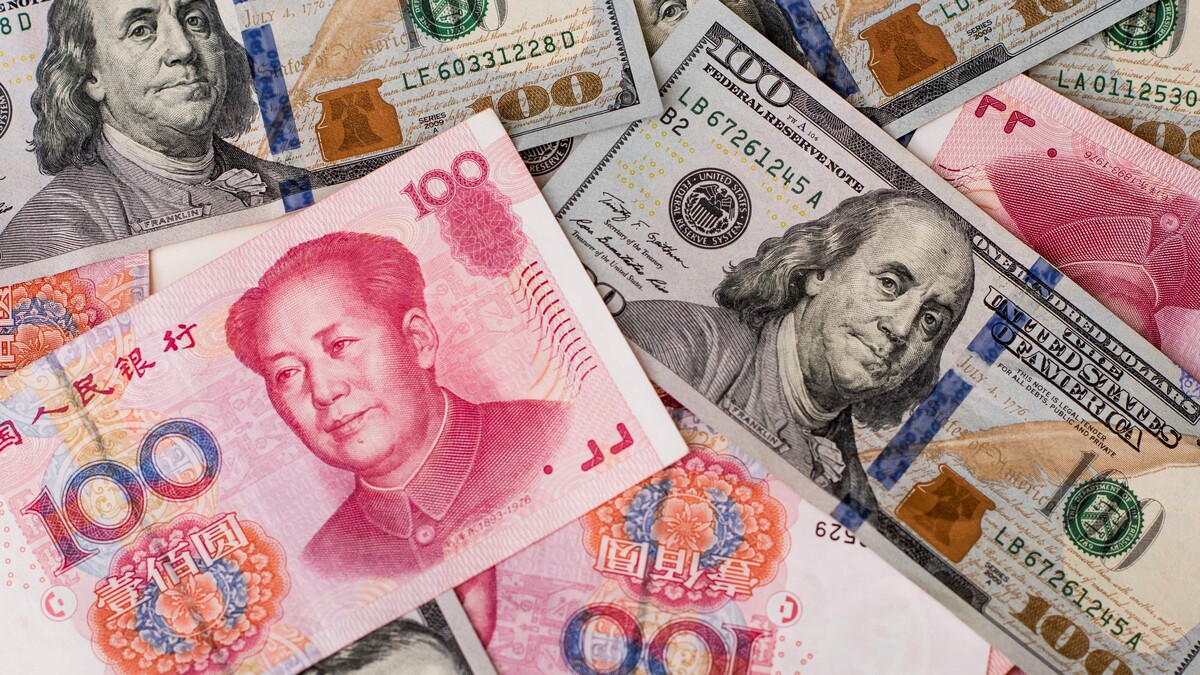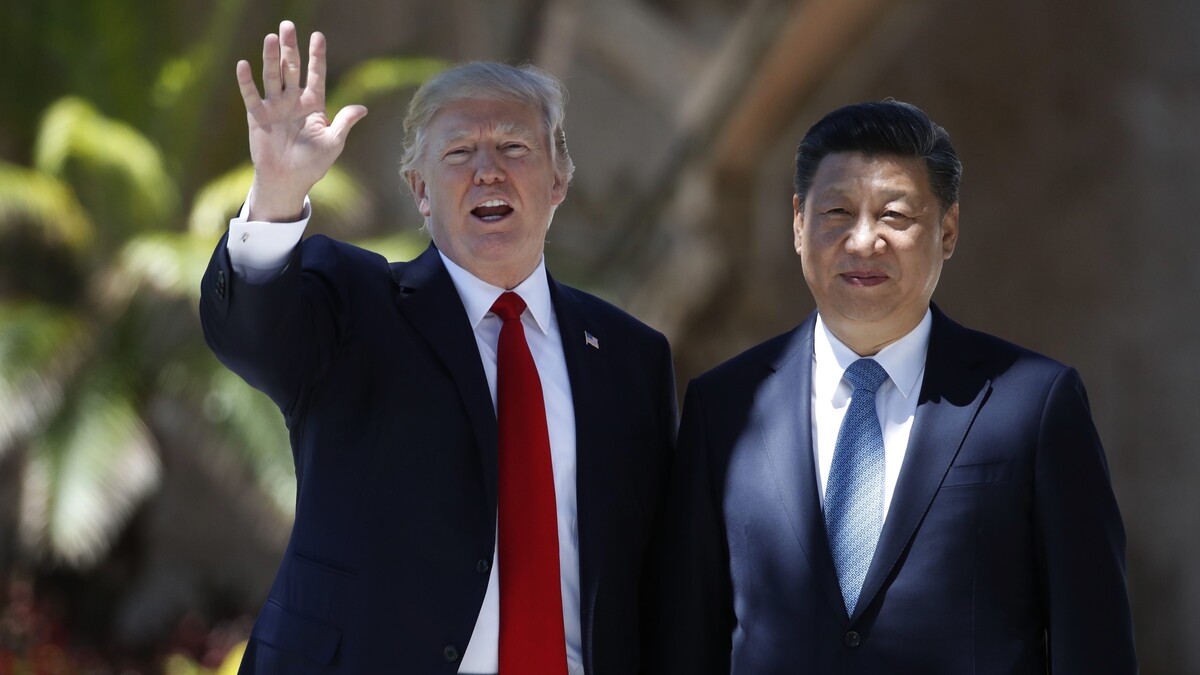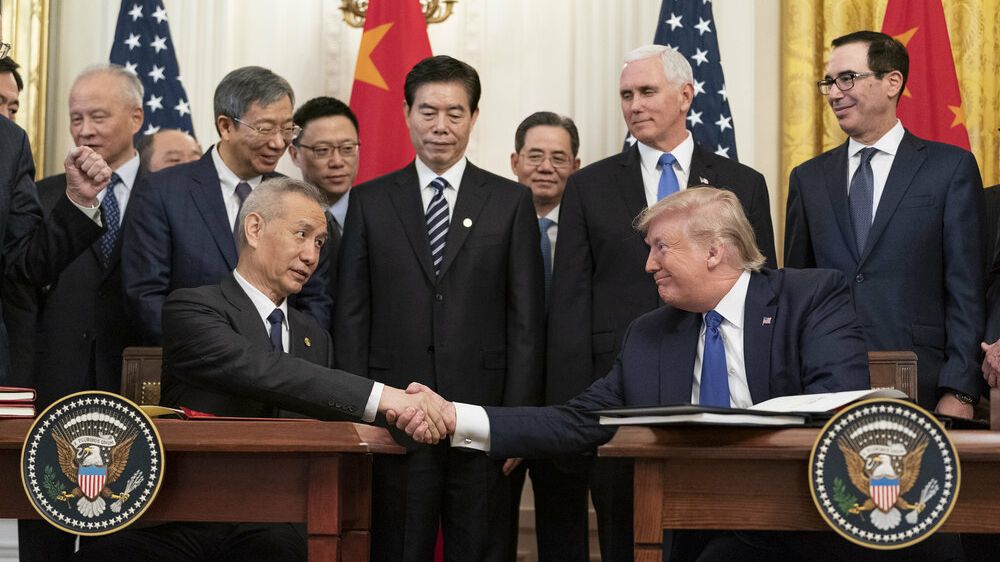Published 06 January 2020 | 5 minute read
Will an interim US-China (Phase One) trade agreement ease tensions in US China relations in 2020? What will influence US China relations in 2020? Will an interim US-China (Phase One) trade agreement provide anything beyond temporary relief? Kenneth Jarrett from Albright Stonebridge Group provided his analysis.
Offering predictions is always risky business, but especially for 2020, when expectations for perfect vision run higher than usual.
As a starting point, we inherit negative trends from 2019, when US-China relations were characterized by increased pressures for economic disengagement. Whether goods, capital, people or technology, all these flows were under stress. That is why the announcement of an “interim agreement” at year’s end was such welcome news, even if the details remain a mystery and we do not know how much to rejoice. At the very least, the pattern of constant confrontation between the United States and China took a pause.
Unfortunately, it is hard to imagine a scenario in which the interim agreement does anything beyond providing temporary relief from two years of escalating trade tensions.
First, feelings of mistrust and suspicion between the two governments are now deeply rooted and public attitudes have become sharply negative. While the two leaders – Donald Trump and Xi Jinping – have incentives to avoid damaging economic dislocation, neither has much reason to pursue a positive agenda. That means the downward spiral in US-China relations will continue, although perhaps at a slower rate.
Second, the substance of the interim agreement itself will be insufficient to reset the tone of US-China relations. Yes, China has committed to a large increase in its purchases of US goods – USD 200 billion over two years based on a 2017 baseline of USD 183.8 billion. That will expand trade in some areas, particularly agriculture, if the targets are met. Other parts of the agreement purportedly address intellectual property rights protection, forced technology transfer, market access barriers and enforcement, but does not tackle state subsidies or the role of China’s state-owned enterprises. The inevitable question will be if the Trump administration achieved enough to justify two years of costly tariffs given that China has taken steps recently in most of those areas, albeit perhaps as a response to American pressure. For example, we have the new Foreign Investment Law that took effect this year, the November blueprint for improved IP protection and a series of actions further opening banking, insurance and securities for foreign players (eliminating most equity caps and many of the special registration requirements).
Third, the interim agreement only addresses the so-called trade war, which has become a sideshow in the growing conflict between the United States and China, which is about geostrategic rivalry and technology leadership. That reality will not be altered by the interim agreement. Technology decoupling will continue, even if each side has different motivations: the United States to limit China’s growing power and influence and China to eliminate its reliance on American suppliers. What the two governments have in common is a desire to reduce vulnerability to economic sabotage by the other.
Finally, one must keep in mind that even if the interim agreement averts the imposition of new and higher tariffs, it leaves in place tariffs on USD 250 billion of Chinese exports to the United States. That is a substantial amount. Ironically, of all the uncertainties that companies face, tariffs are no longer among them. Surveys of the American business community in China reveal that most executives expect tariffs to be with us for many years. Similarly, there are low expectations that the interim agreement will be followed by a second one.
Beyond these dynamics of US-China trade negotiations, what other trends and milestones will shape the new year? Here is a list of areas to watch:
- Decoupling: Continued technology decoupling is a given but how far will this go? Will the United States expand or limit areas where emerging technology is viewed as a threat? USG concerns about TikTok, the popular video sharing app, suggest the trend might be to expand. If so, we will see an impact on cross-border trade and investment in 5G and AI in particular. China will continue its pursuit of self-reliance in critical technologies like semiconductors and pursue leadership in key emerging technologies. Huawei will continue as a proxy for how the technology war is going. Other indicators will be USG decisions on export controls, especially how it defines “emerging and foundational technologies;” the enforcement of national security restrictions on foreign investment (e.g., FIRRMA); and whether calls by some members of Congress for “financial decoupling” gain traction.
- Supply chain: Shifts are underway, but not entirely due to the trade war and far less than some in the Trump administration hoped to see. There has been little reshoring of manufacturing back to the United States. In fact, the chief beneficiary has been Vietnam. Keep in mind that most production by foreign companies in China is for the domestic market and local consumption remains strong. Nonetheless, many companies have looked at alternatives and some have even prepared “shadow” supply chains in other countries if they must leave China. Shifts in the electronics or automotive supply chains would be most significant, as makers of low-value goods have already been gravitating to cheaper locations than China.
- US election: If the interim agreement is signed January 15, that gives President Trump what he needs from China as the US presidential campaign heats up. For both Republicans and Democrats, it then becomes open season on China. We should expect plenty of sharp rhetoric from US politicians that will further poison the bilateral atmosphere and make it difficult for leaders to pursue a positive agenda, if they were so inclined.
- Chinese politics: China has politics too. President Xi has pledged to eliminate poverty in 2020 and 2021 is the 100th anniversary of the founding of the Chinese Communist Party, a year when Xi has pledged that China will become a “moderately prosperous society in all aspects.” Economic growth and stability are important to attaining those goals, which argues for improving ties with the United States. But so is China’s continued transition to a knowledge economy, which has the side effect of increasing areas of conflict with the United States.
- Political risk: China’s policies vis-à-vis Hong Kong and Xinjiang have created new risks for foreign companies who want to stay in Beijing’s good graces but also avoid getting criticized back home for putting profits over principles. The problems go beyond China’s well-known sensitivity over maps and nomenclature. Companies must now deal with a growing worry in the West that China is becoming a high-tech authoritarian state. This has already had a direct impact on surveillance related products but the risk that these problems strike any business is high. Just ask the NBA.
- China’s commitments: The extent to which China delivers on its many promises to improve the operating environment for foreign players will also define how this year shapes up. China must rigorously execute the US-China interim agreement. Implementation of the new Foreign Investment Law will be another bellwether. In addition, there are worries about China’s corporate social credit system, its plans to develop an export control system and “unreliable entity list,” and its restrictions on cross-border data flows.
In short, there is plenty to watch and worry about in 2020. Of course, economic performance is a critical factor in how the year plays out, but that is outside the scope of this column. Overall, the big trends that defined 2019 will persist into 2020. The US-China interim agreement, even if a welcome respite, will not reset the direction of US-China relations or change how those tensions are reshaping trade and commerce across the region.
About Albright Stonebridge Group
ASG is the premier global strategic advisory and commercial diplomacy firm. It offers perspectives honed at the highest levels of government and business, and insights informed by an unparalleled worldwide network of regional experts and sectoral specialists.
© The Hinrich Foundation. See our website Terms and conditions for our copyright and reprint policy. All statements of fact and the views, conclusions and recommendations expressed in this publication are the sole responsibility of the author(s).





